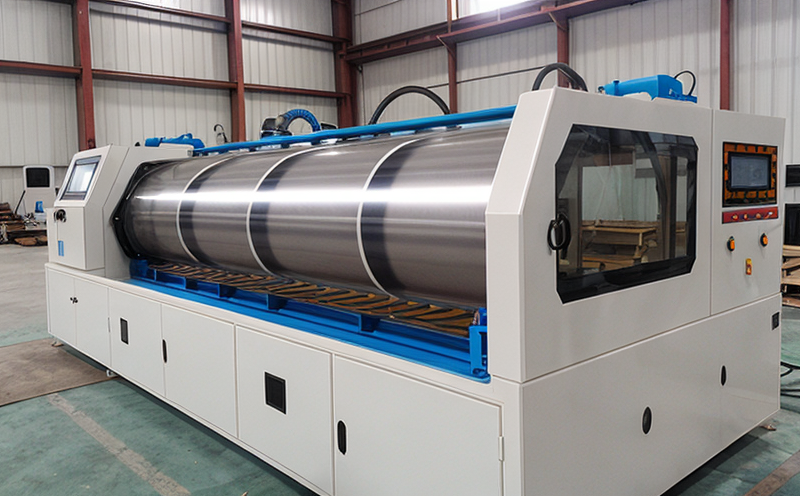ASTM D5035 Breaking force of laminated textiles Strip method
ASTM D5035 is a standard test method used to determine the breaking strength and elongation at break for the cohesive bond between layers in laminated fabrics. This testing procedure is critical for ensuring the integrity and durability of materials used across various industries, including automotive, aerospace, sports equipment, and construction.
The strip method, as defined by ASTM D5035, involves placing a sample under tension until it fails. The breaking force is measured using specialized tensile testing machines capable of applying controlled loads to the sample. This process allows for precise quantification of bond strength between layers in laminated textiles.
One of the primary challenges when performing this test is ensuring that the specimen is prepared correctly. Specimens must be cut from the laminate according to specified dimensions and orientation, taking care not to introduce any defects or inconsistencies into the sample. Proper preparation ensures accurate measurement of the cohesive bond strength between layers.
The testing apparatus used for ASTM D5035 includes a tensile tester capable of applying controlled loads along with displacement sensors to monitor specimen deformation during testing. Compliance with ISO 9001 and other relevant standards guarantees consistent, reliable results across multiple tests.
Acceptance criteria for the breaking force measurement depend on the specific application requirements but typically involve setting upper and lower limits based on industry norms or customer specifications. For instance, automotive manufacturers may require certain minimum values to ensure safety features meet regulatory requirements.
In summary, ASTM D5035 provides a standardized approach to evaluating the cohesive bond strength between layers in laminated textiles through controlled tensile testing. Proper specimen preparation and adherence to established procedures are essential for obtaining accurate results that reflect true material properties under real-world conditions.
Customer Impact and Satisfaction
The implementation of ASTM D5035 breaking force tests enhances customer satisfaction by ensuring high-quality products that meet strict safety standards. Quality managers can rely on these test results to make informed decisions about raw materials, manufacturing processes, and final product design.
Compliance officers benefit from the standardized nature of ASTM D5035 as it helps them stay compliant with international regulations governing textile production and use. By adhering to this method, companies demonstrate their commitment to maintaining high standards of quality and reliability in all aspects of their operations.
R&D engineers gain valuable insights into material performance through detailed breaking force data provided by ASTM D5035 tests. This information enables them to optimize product designs while also identifying areas where improvements are needed. The continuous improvement cycle driven by such testing contributes significantly towards enhancing overall customer satisfaction levels.
For procurement teams, consistent application of ASTM D5035 ensures that they source materials from reliable suppliers who adhere to stringent quality control measures. This reduces the risk of purchasing defective goods and helps maintain brand reputation among consumers.
Environmental and Sustainability Contributions
The use of ASTM D5035 breaking force testing contributes positively to environmental sustainability by promoting the development of more durable, long-lasting products. By ensuring that laminated textiles have adequate bonding strength between layers, manufacturers can extend product lifecycles, reducing waste associated with premature failures.
Additionally, accurate measurement of breaking forces allows for better resource management during production processes. This includes optimizing raw material usage and minimizing energy consumption throughout the manufacturing cycle. As a result, companies adopting ASTM D5035 practices are contributing to overall reductions in carbon footprints and other environmental impacts linked to textile production.
Moreover, compliance with international standards like ISO 14001 fosters greater transparency regarding sustainability efforts within organizations. This enhances trust between stakeholders including customers, investors, and regulatory bodies responsible for promoting green initiatives.
Use Cases and Application Examples
Automotive Industry: In the automotive sector, laminated textiles are commonly used in seat covers and interior trimmings. ASTM D5035 breaking force tests ensure that these materials can withstand the rigorous conditions encountered during vehicle operation without compromising safety or comfort.
Aerospace Sector: Laminates play a crucial role in aircraft seating systems where they must endure extreme temperature variations and mechanical stress over extended periods. Proper application of ASTM D5035 guarantees that these components remain secure throughout their service life, enhancing passenger safety.
Sports Equipment Manufacturing: For products like athletic shoes or protective gear, laminates provide enhanced protection against impact forces while maintaining flexibility necessary for performance activities. Testing according to ASTM D5035 helps manufacturers develop robust designs capable of withstanding harsh environmental conditions without sacrificing durability.
Construction Industry: Roofing membranes and insulation materials often incorporate laminates designed to withstand prolonged exposure to weather elements. Performing ASTM D5035 tests ensures that these components retain their structural integrity even after long-term use, thereby extending building lifespan and energy efficiency.





